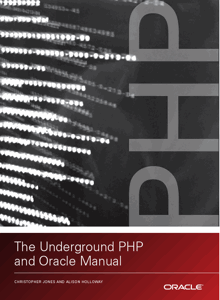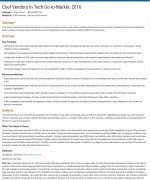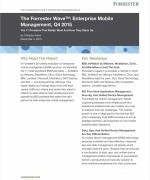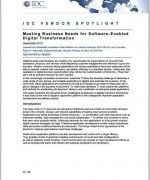Whitepaper: The Power of Predictive Analytics
The Forrester Wave: Enterprise Mobile Management
Report: Meeting business needs for software-enabled digital transformation
Data Science and Business Intelligence - Salary and Skills report
Cloud Computing to Rewrite Corporate Business Models
Percentage of companies innovating with cloud expected to double by 2015
The number of enterprises turning to cloud computing to revamp existing business models will more than double in the next three years, as business leaders move to capitalize on the rapid availability of data and the growing popularity of social media, according to a new study released today by IBM. Businesses that embrace the transformative power of cloud will have a significant advantage in the race to introduce new products and services and capture new markets and revenue streams.
To better understand the shift in how organizations use cloud today and how they plan to employ it in the future IBM, in conjunction with the Economist Intelligence Unit, surveyed more than 500 business and technology executives worldwide. The findings were compiled in a new study, titled "The Power of Cloud: Driving business model innovation."
“Companies are starting to understand -- cloud isn’t just about gaining efficiencies and cost savings; it’s about driving the kind of fundamental innovation that provides lasting marketplace advantage,” said Saul Berman, IBM global strategy consulting leader and co-author of the study.
The Underground PHP Oracle Manual
 This PDF book is for PHP developers that want to implement aplications over an Oracle database. It bridges the gap between the many PHP and Oracle books available and shows how to use the PHP scripting language with Oracle Database. It explains how to install the environment, how to use it and how to obtain the best performance building web aplications with PHP and Oracle databases...
This PDF book is for PHP developers that want to implement aplications over an Oracle database. It bridges the gap between the many PHP and Oracle books available and shows how to use the PHP scripting language with Oracle Database. It explains how to install the environment, how to use it and how to obtain the best performance building web aplications with PHP and Oracle databases...
Business Intelligence Open Source Comparative
What Data Do You Need for Customer Intelligence?

What Is Customer Intelligence?
Customer intelligence is the process of gathering and analyzing information about customers, in order to better understand their behaviors and needs. It's a multidimensional concept that encompasses various types of data, from demographic and psychographic data to behavioral and transactional data.
Continuous Delivery and MLOps: Better Together?

Continuous delivery (CD) is a software development strategy that emphasizes the need for software to be ready for deployment at any time. This approach aims to deliver software updates and features to users as quickly and efficiently as possible, thereby reducing the time to market, and enabling organizations to adapt to changing market conditions swiftly..







